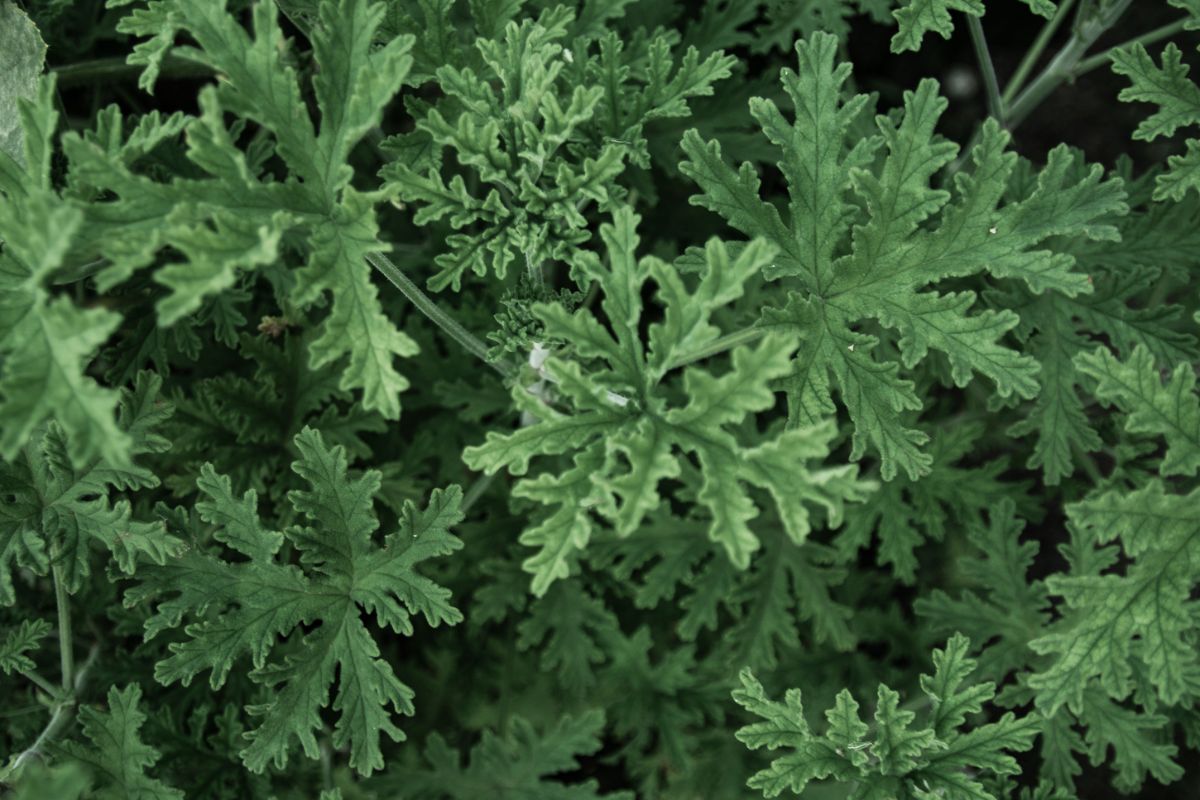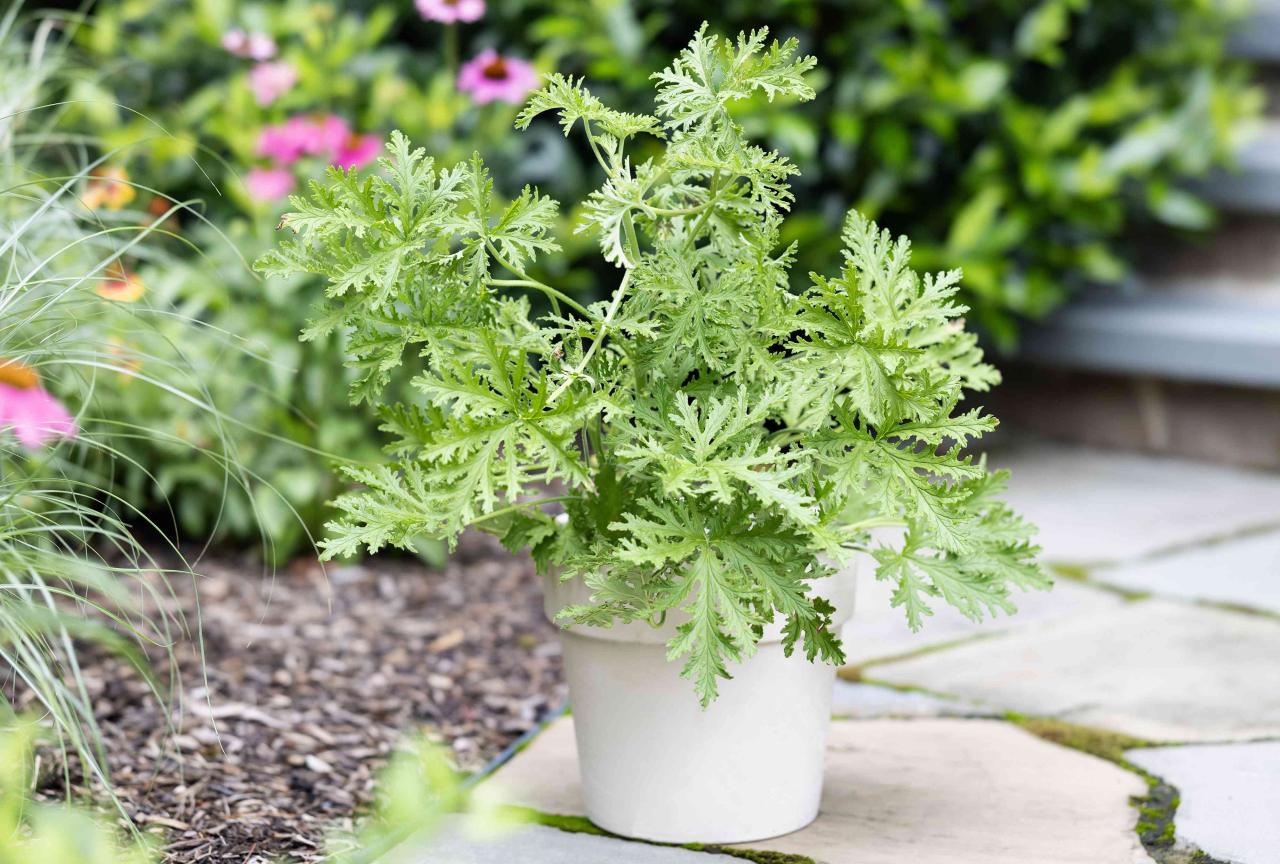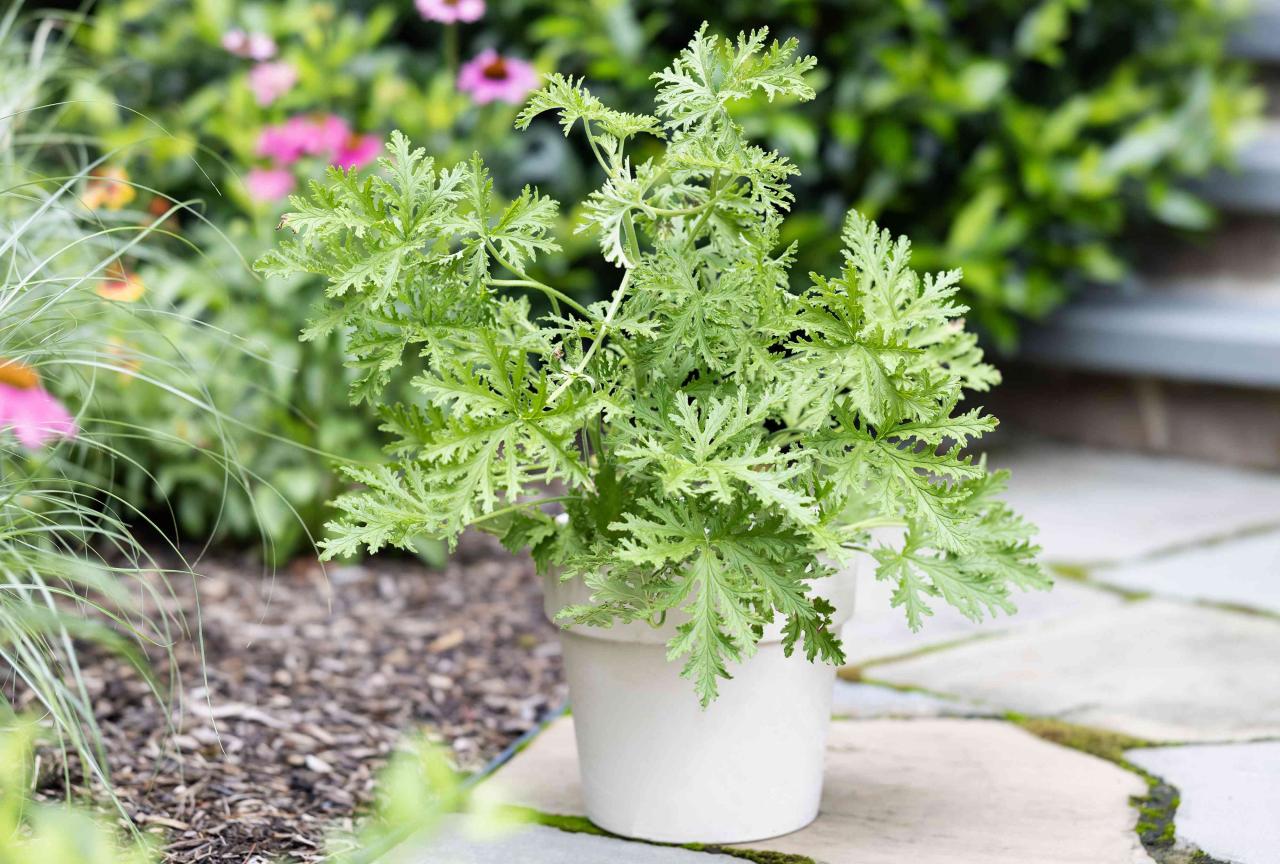Citronella Plant: Essential Growing and Usage Tips for a Bug-Free Yard – Imagine a world where your backyard is a sanctuary, free from the annoying buzz of mosquitoes and the persistent presence of other insects. This dream can become a reality with the help of citronella plants, a natural and effective insect repellent.
These fragrant grasses, known for their distinct lemony scent, have been used for centuries to ward off pesky bugs, creating a more enjoyable outdoor experience for you and your loved ones.
This comprehensive guide delves into the fascinating world of citronella plants, providing essential information on cultivating these versatile plants and harnessing their insect-repelling power. From propagation techniques and optimal growing conditions to various methods of utilizing citronella for pest control, this article equips you with the knowledge and tools to create a bug-free oasis in your own backyard.
Introduction to Citronella Plants

Citronella plants, scientifically known as
- Cymbopogon nardus* and
- Cymbopogon winterianus*, are tropical grasses native to Southeast Asia. These plants have been cultivated for centuries, primarily for their fragrant essential oils. Their unique aroma, reminiscent of lemon and mint, has made them a popular choice for various applications, ranging from traditional medicine to modern-day insect repellents.
The Unique Characteristics and Properties of Citronella
Citronella plants possess distinct characteristics that contribute to their popularity. The most notable feature is their strong, citrusy scent, primarily attributed to the presence of citronellal and geraniol, the primary components of citronella oil. These volatile compounds are responsible for the plant’s potent insect-repelling properties.
- Fragrant Leaves:The leaves of citronella plants are long and narrow, resembling blades of grass. They are the primary source of the essential oil, which is extracted through steam distillation. The leaves are also responsible for the plant’s distinctive aroma, which is often described as a combination of lemon and mint.
- Fast Growth:Citronella plants are known for their rapid growth rate, particularly in warm, humid climates. They can reach heights of up to 6 feet, making them a visually appealing addition to gardens and landscapes.
- Adaptability:Citronella plants are adaptable to a variety of soil types and conditions, making them relatively easy to grow in different environments. They thrive in well-drained soil and prefer full sun exposure.
Benefits of Citronella Plants
Citronella plants have been used for centuries for their various benefits, including their ability to repel insects.
- Insect Repellent:The strong, citrusy scent of citronella oil is a natural deterrent to many insects, particularly mosquitoes, flies, and moths. This property has led to the widespread use of citronella in insect repellents, candles, and other products.
- Aromatherapy:The essential oil extracted from citronella plants is used in aromatherapy to promote relaxation, reduce stress, and improve mood. It is believed to have calming and uplifting properties, making it a popular choice for massage oils and diffusers.
- Traditional Medicine:In traditional medicine, citronella oil has been used to treat various ailments, including headaches, muscle aches, and skin infections. It is believed to have anti-inflammatory, antiseptic, and analgesic properties.
Growing Citronella Plants: Citronella Plant: Essential Growing And Usage Tips For A Bug-Free Yard
Citronella plants are relatively easy to grow, and with a little care, you can enjoy their fragrant leaves and bug-repelling properties for years to come. There are two main methods for propagating citronella plants: from seeds or cuttings.
Propagation Methods
Citronella plants can be propagated from seeds or cuttings, offering different approaches to starting your citronella garden.
Growing Citronella from Seeds
- Start seeds indoors: Begin by sowing seeds indoors about 6-8 weeks before the last frost in your area. Use a seed starting mix and sow seeds about 1/4 inch deep, spacing them about 1 inch apart. Keep the soil moist and warm, around 70-75 degrees Fahrenheit, for optimal germination.
- Transplant seedlings outdoors: Once seedlings have developed a few true leaves, harden them off by gradually exposing them to outdoor conditions over a week. After the last frost, transplant seedlings outdoors into well-prepared soil, spacing them 12-18 inches apart.
Growing Citronella from Cuttings
- Take cuttings in spring or summer: Choose healthy stems from a mature citronella plant and cut them about 4-6 inches long. Remove the lower leaves from the cutting and dip the cut end in rooting hormone.
- Root cuttings in water or soil: You can root cuttings in water by placing them in a jar filled with clean water, making sure the cut end is submerged. Alternatively, you can root cuttings in a pot filled with a rooting mix. Keep the soil or water moist and warm.
- Transplant rooted cuttings outdoors: Once cuttings have developed roots, usually within a few weeks, transplant them outdoors into well-prepared soil, spacing them 12-18 inches apart.
Growing Conditions
Citronella thrives in warm, sunny conditions and well-drained soil.
Sunlight
Citronella plants require at least 6 hours of direct sunlight daily for optimal growth. They can tolerate some shade, but they will produce fewer leaves and less oil in shady conditions.
Soil
Citronella prefers a well-drained soil with a slightly acidic to neutral pH (6.0-7.0). It can tolerate a range of soil types, but it’s best to avoid heavy clay soils that can retain too much moisture.
Watering
Citronella plants require regular watering, especially during hot and dry periods. Allow the top inch of soil to dry out between waterings. Overwatering can lead to root rot.
Fertilization and Pest Control
Regular fertilization and pest control are crucial for healthy citronella growth.
Fertilization
Citronella plants benefit from regular fertilization, especially during the growing season. Use a balanced fertilizer, such as a 10-10-10 formula, every 4-6 weeks. Avoid over-fertilizing, as this can lead to excessive foliage growth at the expense of oil production.
Pest Control
Citronella plants are generally resistant to pests, but they can be susceptible to aphids, spider mites, and whiteflies. Monitor your plants regularly for signs of infestation and treat them with an insecticidal soap or neem oil spray if necessary.
Types of Citronella Plants
There are several different types of citronella plants, each with its own unique characteristics and suitable growing zones.
Type |
Characteristics |
Growing Zones |
|---|---|---|
Cymbopogon nardus (Ceylon citronella) |
Tall, grassy plant with a strong citronella scent. |
9-11 |
Cymbopogon winterianus (Java citronella) |
Shorter, more compact plant with a milder citronella scent. |
9-11 |
Cymbopogon citratus (Lemon grass) |
Tall, grassy plant with a lemony scent. |
9-11 |
Utilizing Citronella for Insect Repellency
Citronella, derived from the lemongrass plant, is widely known for its insect-repelling properties. This natural compound has been used for centuries to deter various insects, particularly mosquitoes, flies, and moths. Its effectiveness stems from its distinct, citrusy scent that is unappealing to many insects.
Methods of Utilizing Citronella
Citronella can be incorporated into various methods to repel insects, offering flexibility in application. Here are some popular approaches:
- Planting Citronella Plants:Growing citronella plants in your garden or near outdoor living spaces provides a natural barrier against insects. The plants release their fragrant oil into the air, creating a protective zone around them.
- Extracting Citronella Oil:Citronella oil, extracted from the lemongrass plant, is a concentrated form of the insect-repelling compound. It can be diluted and used in various applications, such as diffusers, candles, and insect repellent sprays.
- Citronella Candles:Citronella candles are a common household remedy for repelling insects. The burning candle releases citronella oil into the air, creating a pleasant scent that deters insects.
Effectiveness Against Specific Insects
Citronella has proven effective against various insects, particularly those known to be attracted to human scents. Here are some notable examples:
- Mosquitoes:Citronella is widely recognized as an effective mosquito repellent. Studies have shown that citronella oil can significantly reduce mosquito bites when applied topically or used in diffusers.
- Flies:Citronella can also deter flies, particularly house flies and stable flies. The strong scent of citronella is unpleasant to flies, prompting them to move away.
- Moths:Citronella has been found to be effective in repelling moths, particularly clothes moths and pantry moths. Its scent disrupts the moths’ mating rituals and discourages them from laying eggs.
Comparison with Other Natural Repellents
While citronella is a popular natural insect repellent, it is essential to compare its effectiveness with other options.
Citronella plants are a natural deterrent for pesky insects, making them a valuable addition to any outdoor space. While their fragrant leaves are known for their bug-repelling properties, the leaves of another Asian herb, perilla, offer a unique culinary twist.
The Art of Cooking with Perilla Leaf: Essential Tips for Flavorful Meals explores the versatility of perilla in the kitchen, from adding a distinct aroma to stir-fries to infusing a refreshing flavor into salads. Returning to the citronella plant, its versatility extends beyond pest control, as it can be incorporated into DIY insect repellent sprays or even used to create fragrant candles and soaps.
- Lemongrass:Similar to citronella, lemongrass oil is a natural insect repellent. It has a similar scent profile and is often used in combination with citronella.
- Lavender:Lavender oil is known for its calming properties and is also an effective insect repellent. It is particularly effective against mosquitoes and flies.
- Peppermint:Peppermint oil is another natural insect repellent with a strong, minty scent. It is effective against mosquitoes, flies, and ants.
Creating a Citronella-Based Insect Repellent
Creating your own citronella-based insect repellent spray or diffuser is relatively simple and cost-effective. Here are some tips:
- Repellent Spray:Mix a few drops of citronella oil with a carrier oil, such as coconut oil or jojoba oil. Add a few drops of essential oil for fragrance, if desired. Shake well and apply to exposed skin as needed.
- Diffuser:Add a few drops of citronella oil to a diffuser and follow the manufacturer’s instructions.
Safety Considerations and Precautions

While citronella is generally considered safe for use, it’s crucial to understand potential risks and take precautions to ensure safe use for both yourself and your surroundings.
While citronella plants are known for their bug-repelling properties, the culinary world also boasts a variety of fragrant herbs with unique uses. For a touch of exotic zest in your dishes, explore the possibilities of kaffir lime leaves, as detailed in Unlock the Flavor Potential of Kaffir Lime Leaf: Tips for Perfectly Spiced Dishes.
Just like citronella, kaffir lime leaves offer a distinct aroma that can elevate your culinary creations. With their versatility and distinct flavors, these plants can transform your garden into a haven for both enjoyment and pest control.
Allergic Reactions to Citronella
Citronella oil, derived from the citronella plant, can cause allergic reactions in some individuals. The symptoms of an allergic reaction to citronella can vary from mild to severe and may include skin rashes, itching, redness, swelling, and difficulty breathing.
Safe Use of Citronella Around Pets and Children
While citronella is generally safe for use around pets and children, it’s important to take precautions to minimize risks.
- Keep citronella products out of reach of children.Young children are more susceptible to accidental ingestion or contact with citronella products, which can lead to adverse reactions.
- Avoid direct application of citronella oil to pets.Citronella oil can be toxic to pets, especially cats. It’s best to use citronella candles or diffusers instead of applying the oil directly to your pet’s skin or fur.
- Monitor pets closely when using citronella products.If you notice any signs of distress, such as coughing, sneezing, or skin irritation, immediately remove the pet from the area and contact a veterinarian.
Responsible Use of Citronella Products
It’s important to use citronella products responsibly to avoid excessive exposure and potential health risks.
- Follow product instructions carefully.Each citronella product will have specific instructions for use, including the recommended amount and frequency of application.
- Avoid prolonged exposure to citronella oil.Excessive exposure to citronella oil can lead to skin irritation, respiratory problems, and other health issues.
- Ventilate the area when using citronella products.Using citronella candles or diffusers in enclosed spaces can increase the concentration of citronella oil in the air, which can be harmful. Always ensure adequate ventilation to prevent buildup.
Citronella and Pregnancy, Citronella Plant: Essential Growing and Usage Tips for a Bug-Free Yard
While there is limited research on the effects of citronella during pregnancy, some experts advise caution. Citronella oil can be absorbed through the skin and may potentially affect the developing fetus. If you are pregnant, consult with your doctor before using citronella products.
Additional Tips and Resources
Cultivating citronella plants for a bug-free yard is a rewarding endeavor. Beyond the information presented, there are numerous resources and innovative ideas to further enhance your citronella journey.
Trusted Resources for Further Information
Seeking additional information on citronella plants and their uses is a wise step. Here are some reputable resources:
- University Extension Services:Local university extension services often offer valuable resources on growing citronella plants and managing insect pests. Their experts can provide tailored advice based on your specific region’s climate and conditions.
- Botanical Gardens and Arboreta:These institutions often maintain collections of citronella plants and related species. Their websites or staff can offer insights into cultivation techniques and the plant’s history.
- Online Horticultural Communities:Online forums and gardening groups can connect you with experienced gardeners who can share their knowledge and experiences with citronella.
- Scientific Publications:Research articles published in reputable scientific journals provide in-depth information on the plant’s properties and its efficacy as an insect repellent.
Creative Ideas for Incorporating Citronella into Landscaping and Garden Design
Citronella plants offer a unique opportunity to enhance the aesthetics and functionality of your outdoor spaces. Here are some creative ideas:
- Border Plantings:Plant rows of citronella along garden borders or walkways to create a natural insect barrier.
- Container Gardens:Citronella plants thrive in containers, allowing you to strategically place them near patios, decks, or entryways.
- Companion Planting:Citronella can be incorporated into vegetable gardens to deter pests from attacking your crops. Plant them near susceptible plants like tomatoes, peppers, or squash.
- Ornamental Features:Some citronella varieties have attractive foliage and flower stalks, adding a decorative element to your landscaping.
Sustainability of Citronella Farming and its Impact on the Environment
While citronella offers natural pest control, it’s crucial to consider the sustainability of its cultivation.
- Organic Practices:Employing organic farming methods, such as avoiding synthetic pesticides and fertilizers, minimizes environmental impact and promotes biodiversity.
- Local Sourcing:Supporting local citronella growers helps reduce transportation emissions and promotes sustainable practices.
- Alternative Repellents:Explore other natural insect repellents, such as essential oils from lavender, rosemary, or lemongrass, to diversify your pest control strategies.
Summary

By understanding the nuances of citronella plant cultivation and utilizing its natural insect-repelling properties, you can transform your outdoor space into a haven of peace and tranquility. Whether you choose to grow citronella plants directly in your garden, extract their essential oils, or create homemade citronella candles, the benefits are numerous.
Embrace the power of nature and enjoy a bug-free summer filled with the refreshing scent of citronella, creating a haven for yourself and your family.
Question Bank
Can I use citronella plants indoors to repel insects?
While citronella plants are effective outdoors, their scent may not be strong enough to repel insects indoors. Consider using citronella essential oil diffusers or candles for indoor pest control.
How often should I water my citronella plants?
Citronella plants prefer moist soil but do not tolerate waterlogging. Water them regularly, especially during dry periods, but allow the soil to dry slightly between waterings.
Are citronella plants safe for pets and children?
While citronella is generally considered safe, it’s best to keep young children and pets away from the plants and to avoid direct contact with the essential oil. Consult with a veterinarian or medical professional for any concerns.
